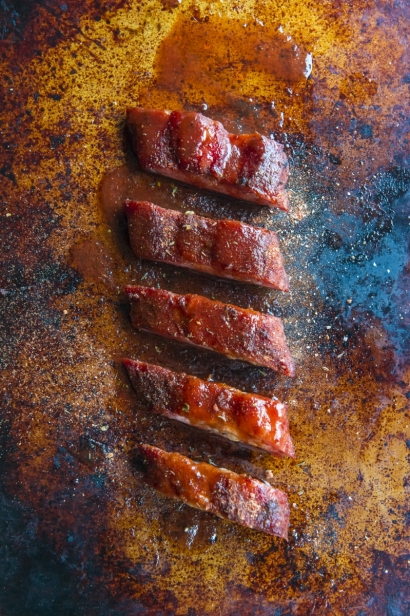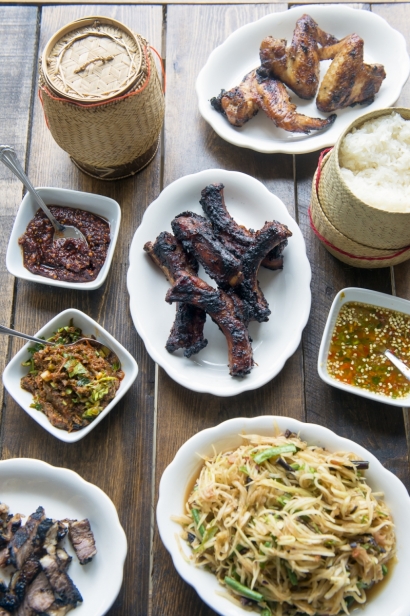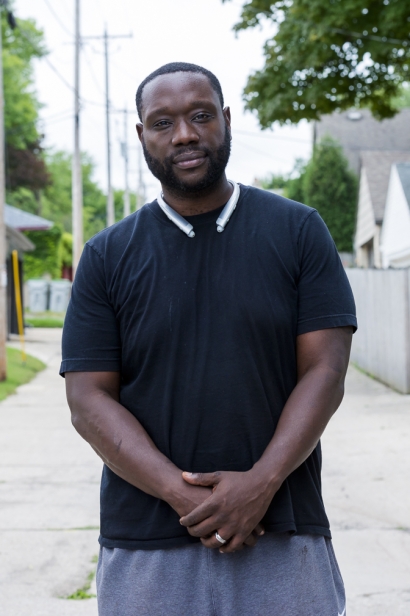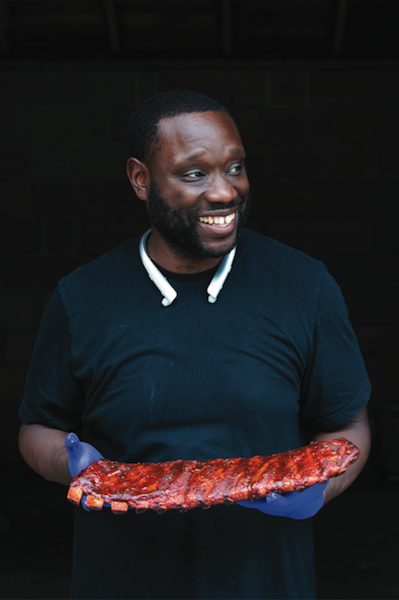A Tale of Two Styles: Milwaukee BBQ
Barbecue. That word means a variety of things to different people. It could mean cooking a whole hog in North Carolina, or it could be slow cooking mutton in Kentucky, or preparing brisket in Texas. To most outside of the South, it means putting a burger or brat on the grill. The latter ain't barbecue.
To understand what barbecue really is, you must understand its complicated and layered history. Before there was Aaron Franklin and the "hipster-revival" of BBQ in cities like Brooklyn, Seattle and Milwaukee, barbecue as we know it was created by black slaves with influences from Natice Americans, the Caribbean, Europe and West Africa.
But barbecue is more than smoke, fire and meat. According to culinary historian Michael Twitty, "barbecue is a form of cultural power and is intensely political, with a culture of rules like no other culinary tradition..."
Barbecue helped fuel plantation gatherings and slave revolts from Gabriel Prosser and Nat Turner, according to Twitty. It fed the civil rights movement. Twitty called barbecue "rebellion food."
Barbecue is also about technique and knowledge, which was usually passed down from generation to generation. When it comes down to it, the primal nature of barbecue is about gathering and sharing.
When my mother was growing up in Haynesville, Alabama just outside of Montgomery, her dad would prepare a whole hog for the family (a very large family). He would cook it over an open fire, also known as a "pig pickin'." All of the animal was prepared and cooked, from the snout to the tail. This usually took place annually.
I remember my mother telling me that historically, parts like the ribs and shoulder were scraps given to slaves to eat. Slaves learned how to turn undesirable parts into something special and delicious. And now those parts cost a premium thanks to the 'gentrification' of barbecue.
But what does barbecue mean in the Midwest, specificallt in Milwaukee? Places like Milwaukee don't have the same culinary history and connection to barbecue like the South--or do they?
I sat down with two individuals--Alex Hanesakda, a Laotian refugee who was raised outside of Milwaukee, and Jason Alson, who was born and raised in Milwaukee-- to discuss what barbecue means to them, what sets their barbecue apart and if there is such a thing as "Milwaukee Barbecue."
Both of these men approach barbecue differently; however, they both learned techniques from their respective families and then adapted them based on their own personal experiences in Milwaukee to create something honest and unique.
First, I talked to Jason Alston who is chef and founder of Heaven's Table. Prior to Heaven's Table, Alston was a chef at Mikey's where he prepared his take on barbecue, which included beef ribs, turkey butt and more. Before that, he worked with Chef Justin Carlisle from Ardent.
Alston describes Milwaukee barbecue as "freestyle," which means not one style but a variety of styles and techniques to create something uniquely Milwaukee.
Jason first got the taste of barbecue from his grandfather at the age of twelve. Originally from Tennessee, his grandfather grew up on 9th and Keefe, and would slow cook everything from raccoon to pigeon having learned from his father and uncles before him. Jason later learned and adapted some of his grandfather's recipes, including his vinegar base recipe, and was inspired to attend culinary school when he saw his uncle from Mississippi smoke and wrap a pork shoulder in foil.
Following culinary school, Jason worked at the Umami Moto where he ran into Chef Kurt Fogel. Kurt taught Jason a variety of culinary techniques. During the time at Umami Moto, Jason asked Kurt about smoking meat. Kurt showed Jason techniques for preparing a rub. Shortly after that, Jason prepared his first brisket in the oven.
From there, Jason found his own style. That love of barbecue led Jason to become the chef of Mikey's, which was previously known as more of a club than a restuarant. Mikey, the owner, happened upon some of Jason's barbecue when he was using Kurt's smoker. He was so impressed with the barbecue that he asked Jason to develop a menu featuring types of meats, sides and sauces. It took five months to develop the menu, costs and designs.
Mikey's offered Jason the use of their pellet smoker, but Jason couldn't stand pellet smokers. Being resourceful, he decided to build his own wood smoker for a soft opening, which was a success. Some of the items on the menu at Mikey's included beef ribs and turkey butt (yes, turkey butt). He even developed a sauce that incorporated Door County cherries and beer. Don't get it wrong, however... Jason believes that the sauce should be an accent to the barbecue. The meat should always shine.
Jason's experiences allowed him to create his own style of barbecue, which can definitely be considered a Milwaukee style. After a few years a Mikey's, Jason decided to return to school and eventually start his own catering business called Heaven's Table.
Alex Hanesakda, founder of the Laotian food companies Sap Sap and Mamma's Eggrolls, approached barbecue from a completely different perspective.
Alex is a Laotian refugee who was raised in Burlington, Wisconsin. His family fled Laos to Thailand to escape war and spent two years in a refugee camp. They arrived in the United States in 1982.
Similar to my family, Alex's family would get a whole pig, or even a water buffalo and cook it over a fire for a family feast. And just like Jason, Alex was inspired by watching his dad throw events in the backyard for friends and family.
Alex has been hosting two pop-up series outside of Milwaukee: Pho on the Farm and Lao-Style BBQ. The latter is a hybrid of traditional Laotian barbecue known as seen dat and American style barbecue.
Seen dat is very similar to Korean-style barbecue, where the meat or protein is cooked on a tabletop griddle or grill and served with sticky rice (khao niew) and sauces meant for dipping. The flavor profile for Laotian barbecue is a combination of sweet and spicy flavors, using ingredients like kaffir lime, shallots and garlic.
Another difference between chefs is how Alex prepares his barbecue; unlike Jason's low-and-slow style, Alex cooks the meat quickly over a very hot fire. While Jason might serve brisket and pork shoulder that is smoked for four to five hours, Alex prepares baby back ribs, sesame beef jerky, skirt steak and Lao-style sausages that have been high-heat seared.
The sausage reminds me of Texas-style hot links; however, instead of spices like garlic powder, paprika and cayenne pepper, Alex's sausage uses ingredients like lemongrass, kaffir lime leaves and bhut jolokia peppers. You can purchase the sausage in select markets in the Milwaukee area. And instead of traditional barbecue sauce, he serves three styles of sauce of dipping: jaew bong (smoked chile), jaew mok len (roasted tomato) and jaew som (Thai chile and garlic).
There are also delicious sides accompanying Alex's Laotian-style barbecue such as khao new (sticky rice), larb gai (chicken salad), tum mark dang (smashed cucumber) and tum mark hoong (smashed green papaya).
While Alex and Jason's styles are very different, both share a respect for their family's tradition and history. At the end of the day, both Jason and Alex understand the true meaning of barbecue: coming together and sharing. And in this day and age, we definitely need more of that.











